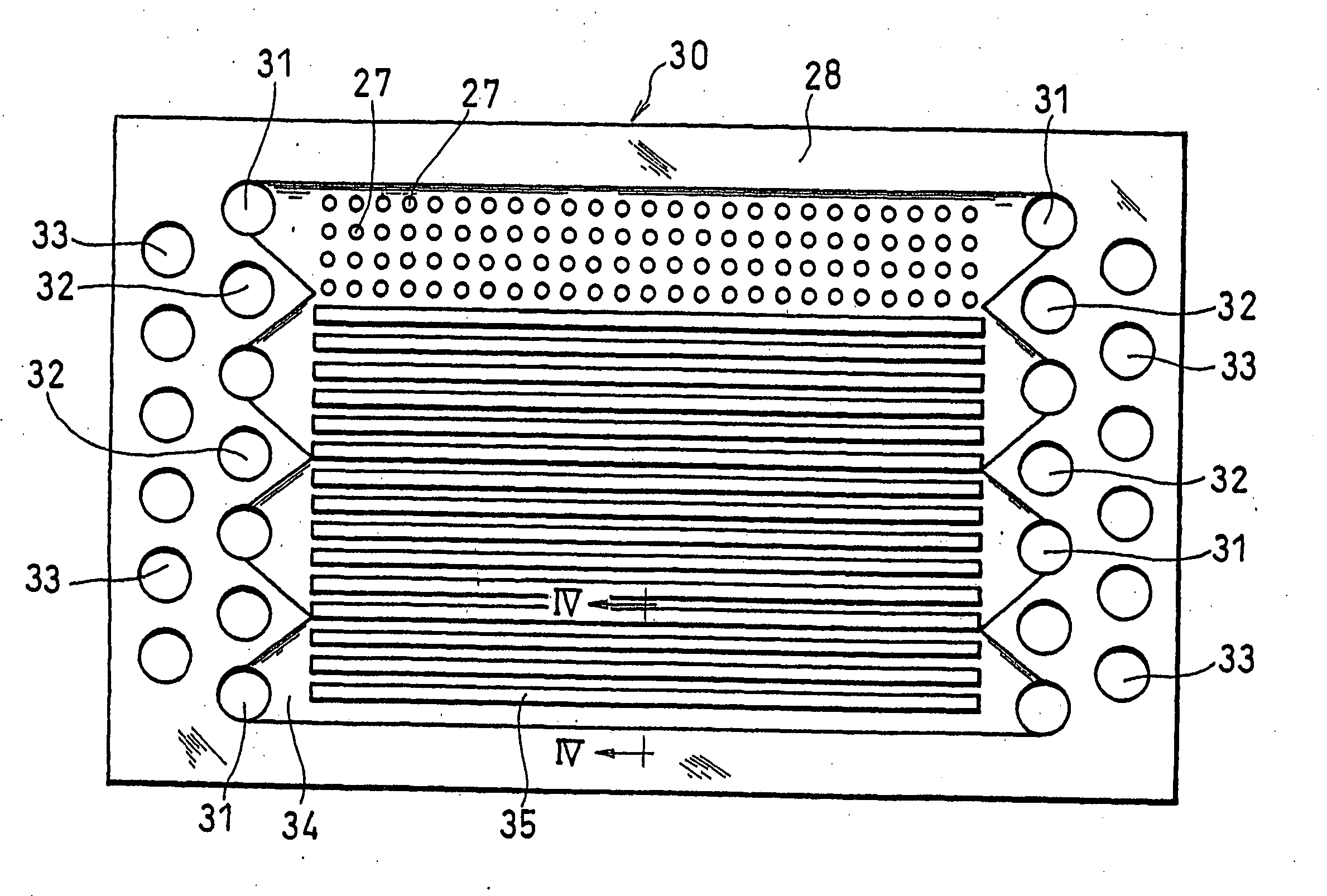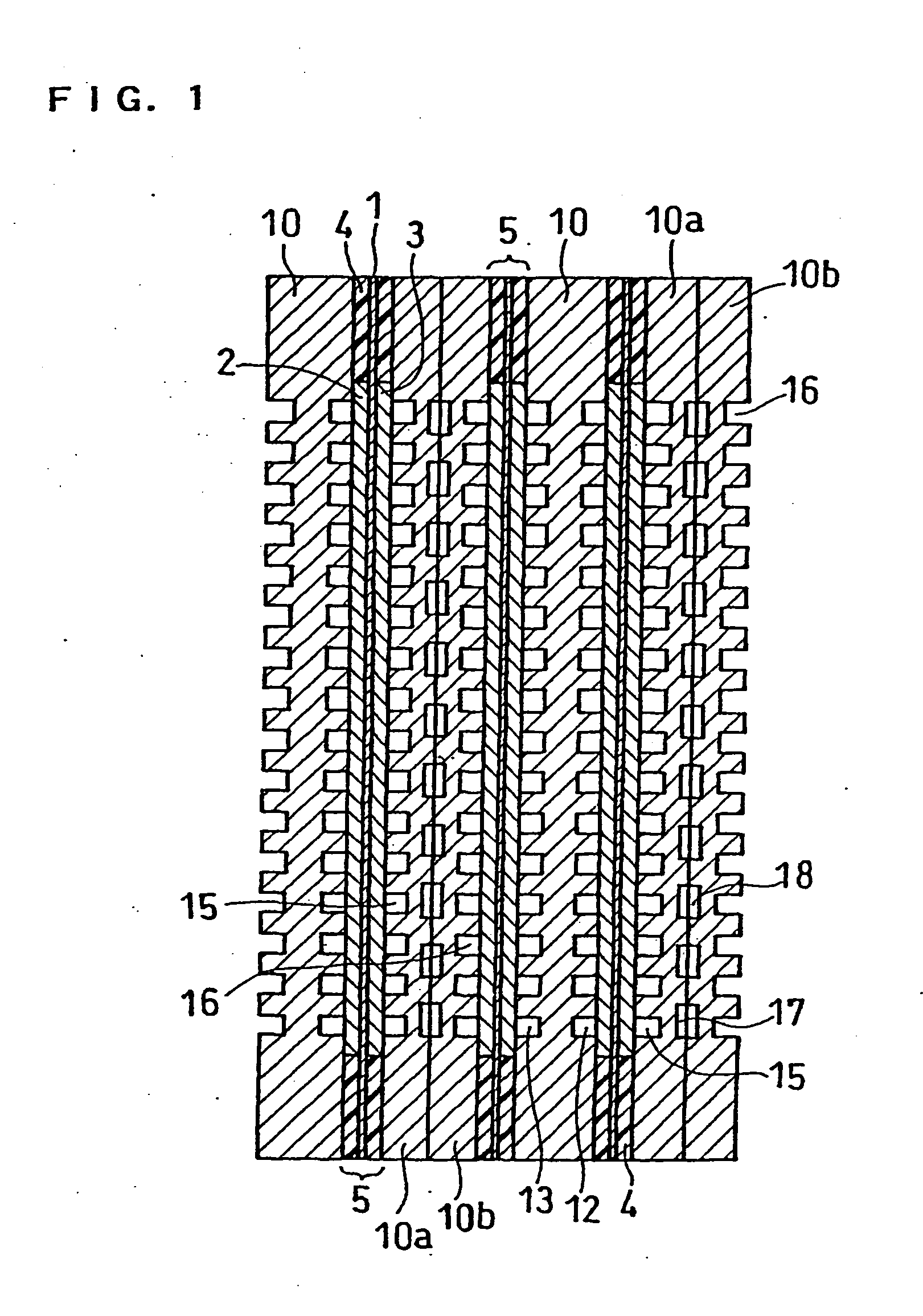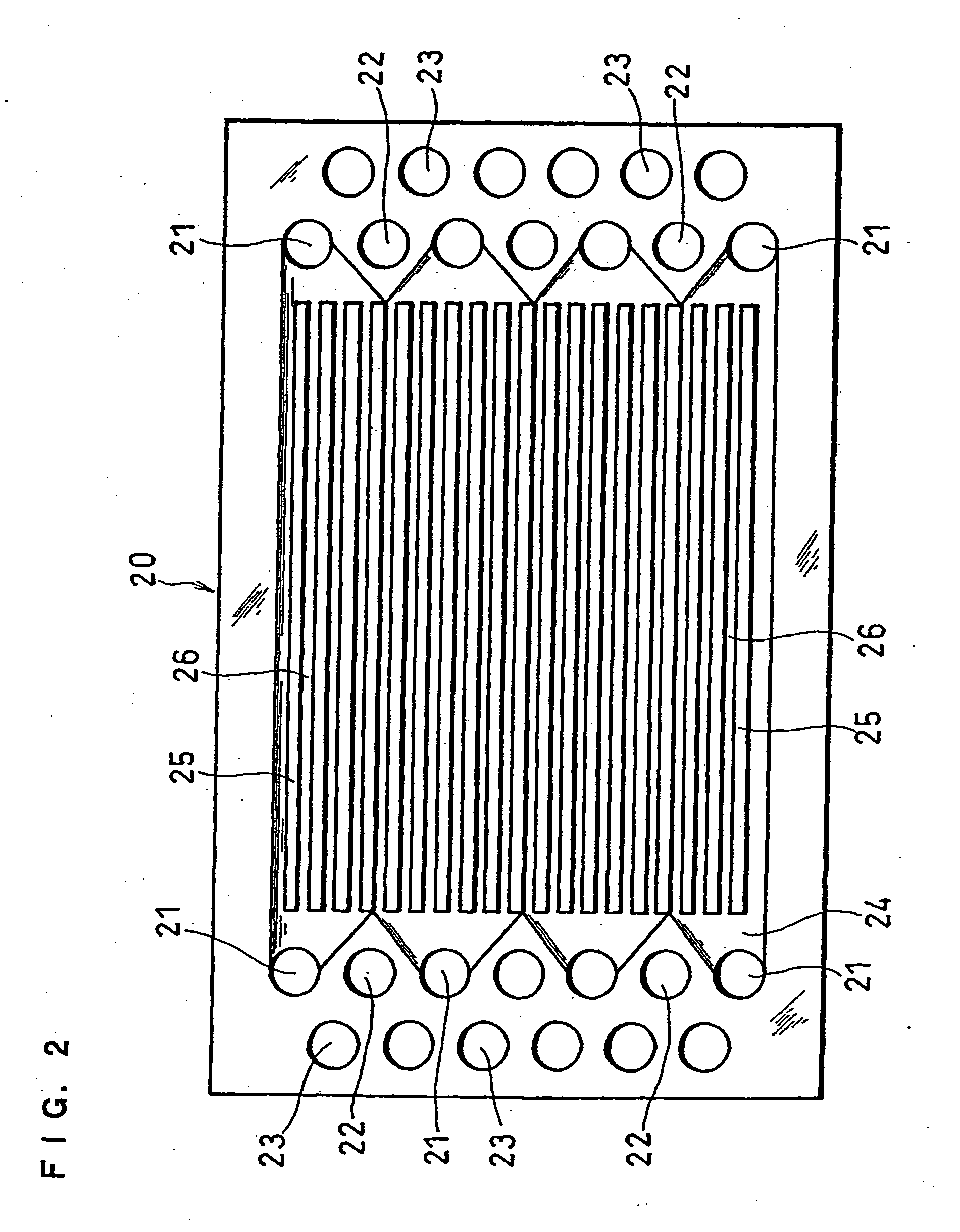Polymer electrolyte fuel cell and method of manufacturing the same
- Summary
- Abstract
- Description
- Claims
- Application Information
AI Technical Summary
Benefits of technology
Problems solved by technology
Method used
Image
Examples
example 2
[0094] Firstly, an amorphous carbon plate with dimensions of 20 cm.times.32 cm and a thickness of 1.6 mm was prepared. This plate was subjected to cutting to have the same shape as in Example 1, thereby forming a conductive separator plate. Since the gas flow channels and cooling water flow channels had a depth of 0.5 mm, the thinnest part of the separator plate had a thickness of 0.6 mm.
[0095] This separator plate was baked at 500.degree. C. for 30 minutes in an air atmosphere to provide the surface of the separator plate with a hydrophilic functional group. Surface analysis of a resultant separator plate "b" confirmed the presence of a carbonyl group and a hydroxy group.
[0096] The separator plate provided with oxide functional groups on the surface thereof had the same conductivity in the thickness direction, density, He gas permeability and bending strength as those before the oxidation treatment.
[0097] The separator plate thus produced was used to fabricate a cell stack of 100 c...
example 3
[0101] Firstly, an artificial graphite powder (mean particle size of about 10 .mu.m) and fibrous graphite (mean diameter of 50 .mu.m, mean length of 0.5 mm) were introduced in a 2N nitric acid aqueous solution, stirred for 30 minutes and then washed well with distilled water. Surface analysis of the artificial graphite powder and fibrous graphite subjected to the oxidation treatment confirmed the presence of a carbonyl group and a hydroxy group.
[0102] Next, 50 parts by weight of an artificial graphite powder and 38 parts by weight of fibrous graphite, both subjected to the oxidation treatment, was mixed with 12 parts by weight of a thermosetting phenolic resin, and the mixture was kneaded by a kneader extruder. The kneaded mixture was charged into a die and hot-pressed. The hot-pressing was performed for 10 minutes under the conditions of a die temperature of 150.degree. C. and a pressure of 100 kg / cm.sup.2.
[0103] In the case of the die used herein, convexes with a mean diameter of ...
example 4
[0108] Firstly, a liquid crystal polymer plate with dimensions of 20 cm.times.32 cm and a thickness of 0.1 mm, reinforced with glass fiber mixed therein, was prepared. In this plate, manifold apertures for an oxidant gas, fuel gas and cooling water, a recess slot for forming the gas flow channels and a large number of through holes were formed, as shown in FIG. 3.
[0109] Next, an artificial graphite powder (mean particle size of about 10 .mu.m) and fibrous graphite (mean diameter of 50 .mu.m, mean length of 0.5 mm) were charged into a 10% hydrogen peroxide aqueous solution, stirred for 10 minutes and then washed well with distilled water. Surface analysis of the thus treated artificial graphite powder and fibrous graphite confirmed the presence of a carbonyl group and a hydroxy group.
[0110] 50 parts by weight of an artificial graphite powder and 38 parts by weight of fibrous graphite, both subjected to the oxidation treatment, was kneaded with 12 parts by weight of a thermosetting ph...
PUM
| Property | Measurement | Unit |
|---|---|---|
| Width | aaaaa | aaaaa |
| Density | aaaaa | aaaaa |
| Density | aaaaa | aaaaa |
Abstract
Description
Claims
Application Information
 Login to View More
Login to View More - R&D
- Intellectual Property
- Life Sciences
- Materials
- Tech Scout
- Unparalleled Data Quality
- Higher Quality Content
- 60% Fewer Hallucinations
Browse by: Latest US Patents, China's latest patents, Technical Efficacy Thesaurus, Application Domain, Technology Topic, Popular Technical Reports.
© 2025 PatSnap. All rights reserved.Legal|Privacy policy|Modern Slavery Act Transparency Statement|Sitemap|About US| Contact US: help@patsnap.com



